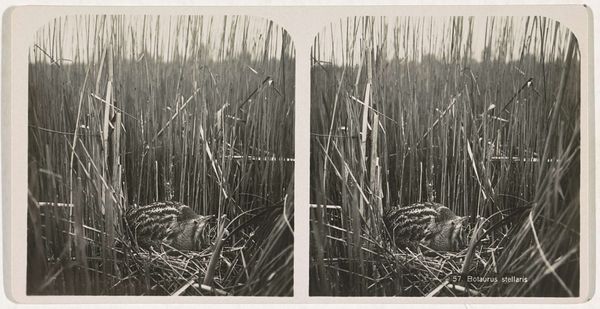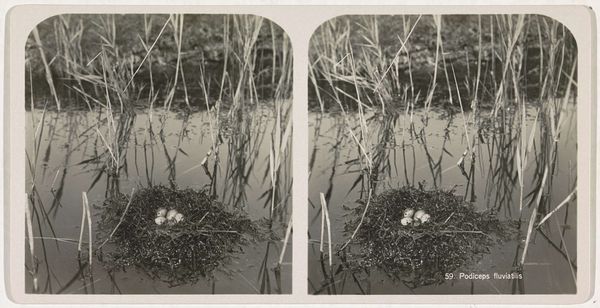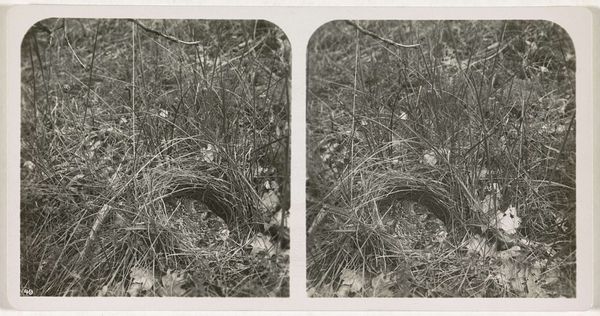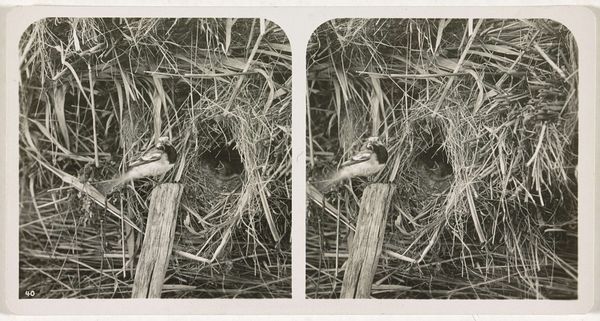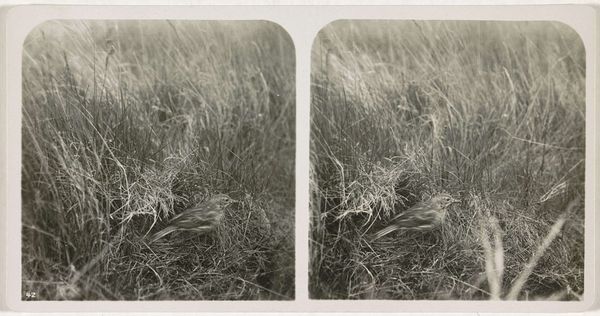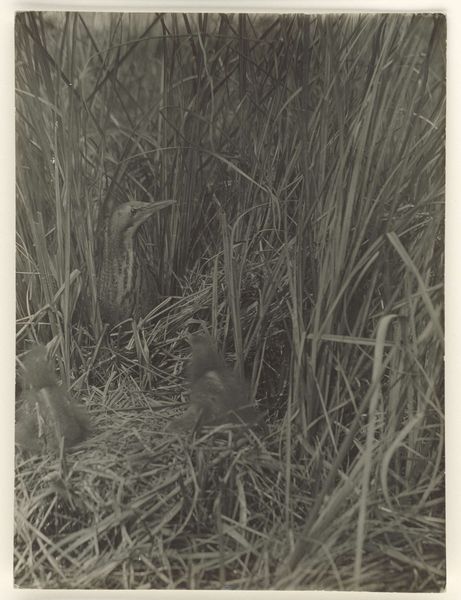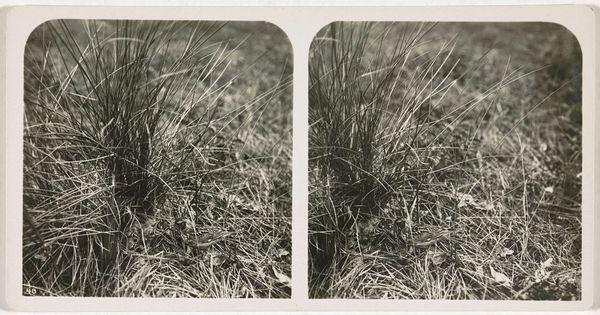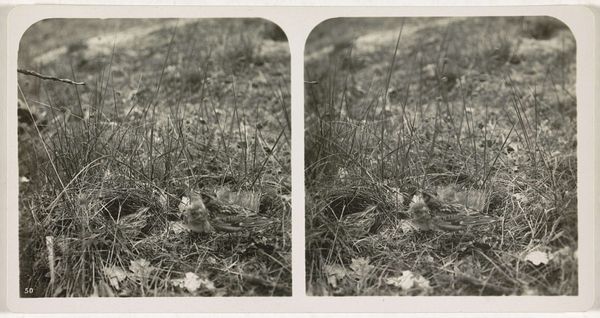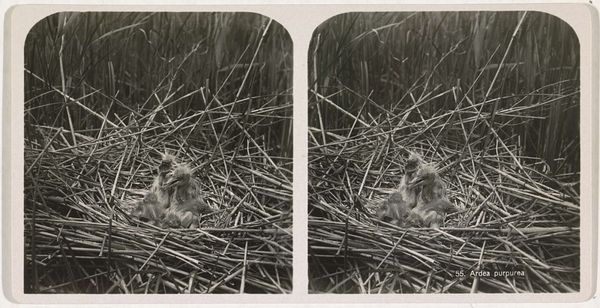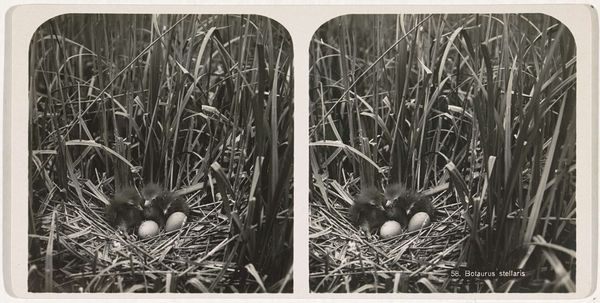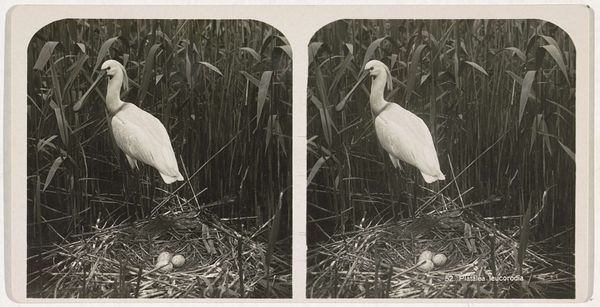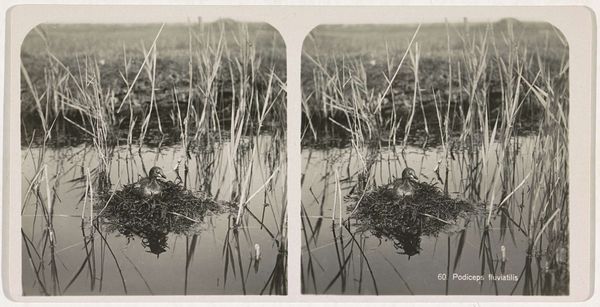
photography, gelatin-silver-print
#
still-life-photography
#
landscape
#
photography
#
orientalism
#
gelatin-silver-print
#
realism
Dimensions: height 84 mm, width 164 mm
Copyright: Rijks Museum: Open Domain
Curator: Immediately, I'm struck by this piece; it evokes a secret, hushed atmosphere. It reminds me of being a child and accidentally stumbling upon something precious and hidden. Editor: Indeed. This gelatin silver print, "Purperreiger bij nest met drie jongen," translating to Purple Heron by Nest with Three Young, presents us with a sensitive rendering of wildlife, dating roughly from 1870 to 1940. Curator: Wildlife photography wasn't exactly common then, right? Editor: Not as we know it today, no. It’s an earlier work in this field, reflecting, to some extent, that enduring interest in "Orientalism"—although arguably, a focus on "exotic" flora and fauna within the artist's geographical region perhaps pushes against the concept of othering typically involved in Orientalism. What do you make of the stereoscopic effect? Does it affect the way we perceive this mother heron and her nest? Curator: It definitely gives it an interesting depth—as if we’re peering directly into their concealed world, rather than just seeing a flat image. You know, in folklore, herons are often associated with patience, stillness, and good luck. What are your thoughts on that symbolism in light of this rather delicate depiction? Editor: That is interesting! In this image, that patience seems almost strained by vigilance. Notice how the composition situates the heron and her nest amidst dense, nearly overwhelming foliage. The tight crop magnifies that tension, making her attentiveness to her role as protector ever so palpable. The eggs appear particularly vulnerable within their coarse nest. Curator: The light is pretty spectacular too. There’s such a gentle quality about it that suggests early morning light, infusing the image with both serenity and fragility, a kind of dreamlike quality. And dreams themselves frequently invoke potent symbolism, don't they? Editor: I do wonder what story this image tells within the broader scope of Adolphe Burdet’s wider body of work—he seems to have truly valued this very sensitive interplay between animal subject and photographic method, if we're to go by other photographs by him found in the Rijksmuseum archives. Curator: Well, I know what you mean; this one absolutely has an intimate, dreamlike aura that holds you, pulls you right in... I find myself lingering a bit longer. Editor: And for me, it feels as if the image holds us as much as we observe it, and such mutual recognition is not easily forgotten.
Comments
No comments
Be the first to comment and join the conversation on the ultimate creative platform.
